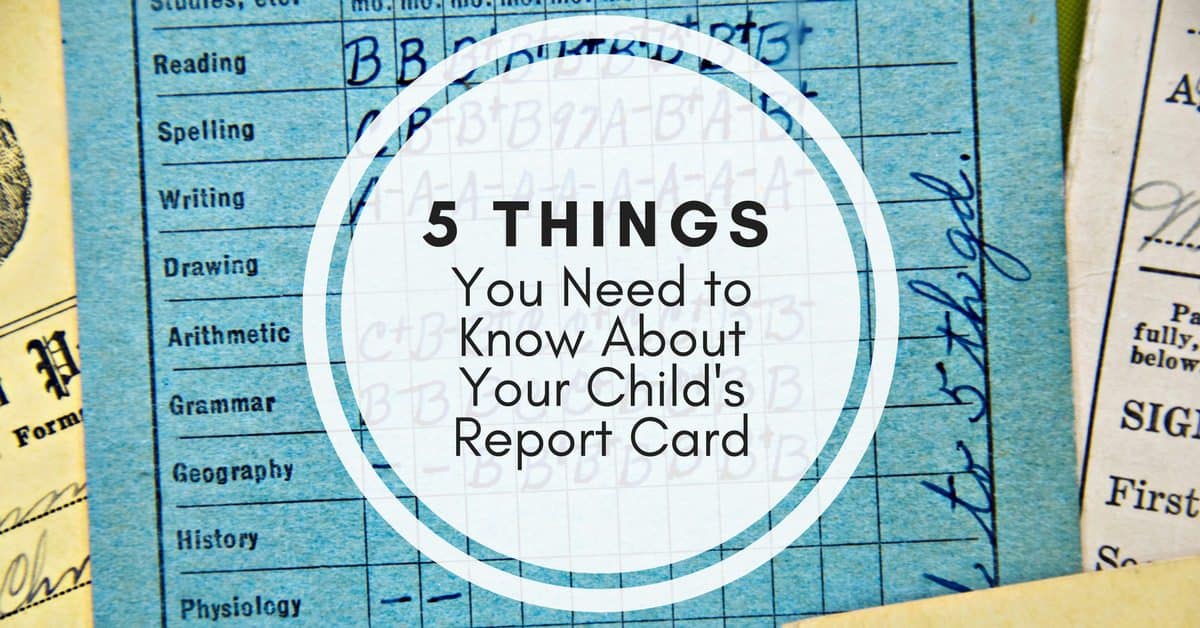
Twenty-first-century report cards look nothing like their twentieth-century predecessors. Sometimes it feels like you need a master’s degree in education to decipher all the “eduspeak” in the comments section (not to mention schools that have moved away from using traditional letter grades). How are “adequate” skills different than “competent skills”? What does it mean if your child received a “P”?
Regardless of the grading system that your child’s school uses to report on student learning, there are some universal truths about modern report cards that every parent needs to know. Keep these in mind the next time you sit down with your child to review their progress at school.
RELATED: Download Our Free Homework Charts!
Strength-Based Reporting
Many school systems today require their teachers to use strength-based reporting. This means that rather than focus on what the student can’t do, the teacher puts most of the emphasis on what the student can do. There are benefits to strength-based reporting as children feel good when they read about and share their successes. However, strength-based reporting can also mask under-developed skills and knowledge, especially when the identified strengths are things that your child should have learned years earlier. The best way to get a full picture of your child’s achievement compared to what is expected of a student in that grade is to ask the teacher, in person, whether or not your child is working at grade level.
Comment Banks
Parents of twins and triplets probably figured this one out as soon as they saw their children’s near-identical report card comments. Many schools still use banks of pre-written comments to describe student achievement. Each comment has an associated numeric code so, for example, a teacher only has to type in “76” to produce a comment such as, “Jenny has good numeracy skills and can solve both simple calculations and basic word problems with accuracy.” If you think your child is receiving general feedback, make sure to ask specific questions about their learning at the next parent-teacher conference.
The Sandwich Technique
The sandwich technique is common in many fields where feedback occurs, but it happens most frequently in education. When teachers use this technique, they “sandwich” negative feedback between two pieces of positive feedback. Your child’s report card might read, “Caden is an enthusiastic learner. He is learning to behave appropriately in the classroom. Caden also shares many ideas during our class discussions.” Generally, the negative feedback in the middle of the comment is the student’s most significant barrier to reaching their full potential at school. Be on the lookout for this comment pattern on your child’s report card so that you can help him or her address their areas of need.
Due Dates and Deadlines
Teachers typically submit their report cards well in advance of when they are sent home to families. Often, teachers will submit their report cards, then proofread them, then have a colleague review them, and then have an administrator read their grades and comments. This process can easily take upwards of two weeks. For students, this means that the work they complete in the week or two leading up to their report card will likely factor into their grade during the following reporting period.
If you know your child has missing work or needs to re-submit an assignment to show more learning, don’t leave it until the last minute. Encourage your child to finish and re-do assignments within five school days of receiving feedback from the teacher so you can be sure it will make it onto the relevant report card.
Nothing is Set in Stone
Sometimes teachers make mistakes. It could be as simple as mistyping the score for one assignment (typing 58% instead of 85% for a major assignment could easily cause your child to drop one letter grade or more), or it could be a more significant misunderstanding of the learning that your child demonstrated during the reporting period.
Either way, it’s okay to ask for clarification around your child’s report card. Good teachers make their mark books accessible and can provide examples to show how your child’s work compares to grade-level expectations. In elementary school, it’s appropriate for parents to initiate a dialogue about students’ grades, but by junior high, students should be advocating for themselves (and then involving their parents if questions persist after speaking to the teacher).
Learning and sharing their learning should be a joyful experience for children. While good letter grades and positive written comments deserve celebration, so do other habits of good learners — such as trying new ways of learning, learning well with others, and developing effective learning habits. Remember these ideas the next time you read your child’s report card, and don’t forget that report cards are only one piece of a much bigger learning puzzle.
If your family is struggling with homework, download our free homework charts!


